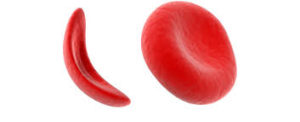Sickle Cell Anemia Facts And Treatment
Sickle cell anemia is an inherited hematologic disorder that distorts the shape of the red blood cells making them C-shaped. Typically, the red blood cells (RBCs) are disc-shaped, which causes them move freely and easily through the blood vessels. However, with the sickle cell, the C-shape makes the RBCs sticky and hard. Consequently, this causes pain and damage to the body tissues. Let’s look at the sickle cell anemia facts and treatment;
Sickle cell anemia facts
Not linked to sex chromosomes
The disease is inherited as an autosomal recessive condition. For the condition to occur, the gene causing it most be inherited from both parents (father and mother)
People with sickle cell trait do not show any symptoms
While people suffering from sickle cell anemia show many complications, those with the sickle cell trait doesn’t show any unless when they are in high altitudes such as while on a flight. The trait is dormant.
People suffering from this disease experience eye problems
Sickle cell anemia affects the retina of the infected person. This is because this part does not get the necessary nourishment because the disorder tampers with the circulating of blood cells, causing deterioration and in extreme cases blindness.
Sickle cell anemia may cause hypertension
High blood pressure is common among people suffering from the sickle cell disease. The reason behind this is due to damaged blood cells in the lungs of the person. There may also be blood blockage to the brain of the infected, which may cause a stroke.
You cannot prevent sickle cell anemia
If both parents carry the sickle cell trait, there is no way of preventing this disorder. There exist a one in four possibilities of giving birth to a child infected by the disease.
Sickle cell anemia treatment
You can on ly reduce the pain caused by sickle cell anemia, but there is no permanent cure for the disease. Doctors can provide special fluids when the patient is dehydrated or supply the patient with oxygen when there is not enough in their bloodstream. Hydroxyurea can be used to prevent pain, acute chest syndrome and boost growth in children.
ly reduce the pain caused by sickle cell anemia, but there is no permanent cure for the disease. Doctors can provide special fluids when the patient is dehydrated or supply the patient with oxygen when there is not enough in their bloodstream. Hydroxyurea can be used to prevent pain, acute chest syndrome and boost growth in children.
However, in severe conditions, a blood transfusion can be used to reduce the adverse complications caused. Meanwhile, research is ongoing and maybe a permanent cure will be discovered. Time will tell. The bottom line I hope the sickle cell anemia facts and treatment options explained in this article will be helpful.

